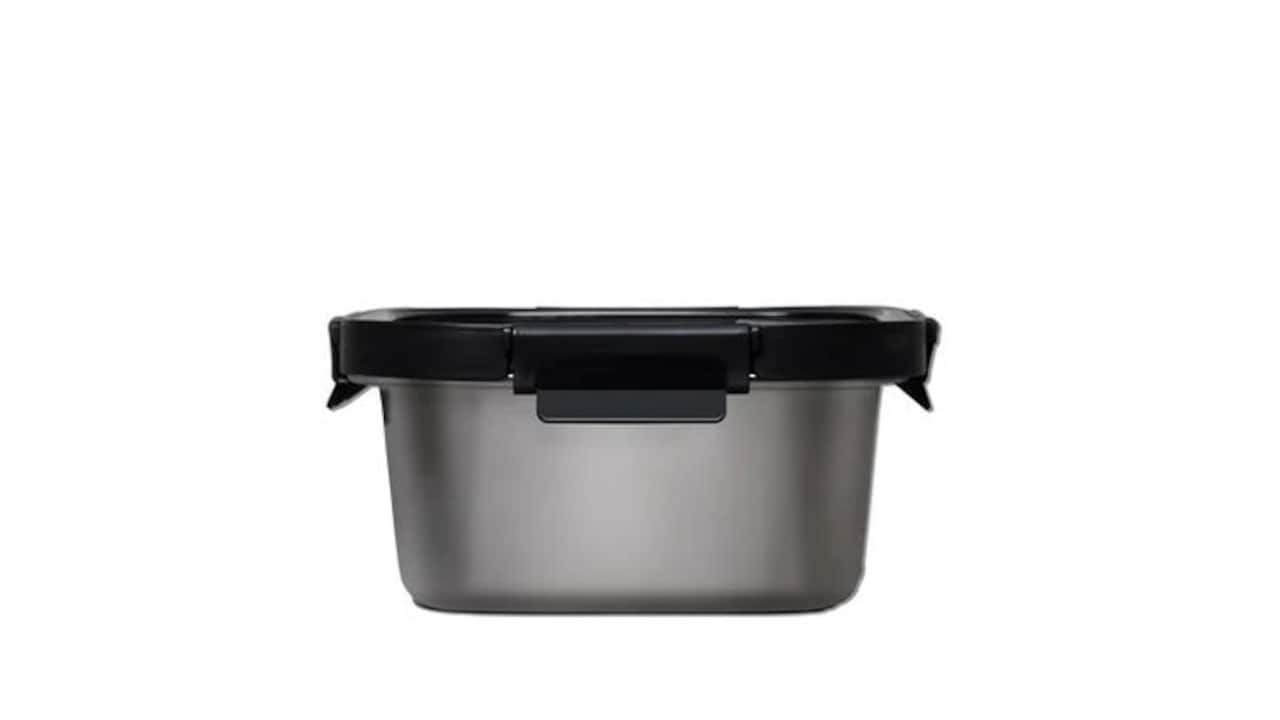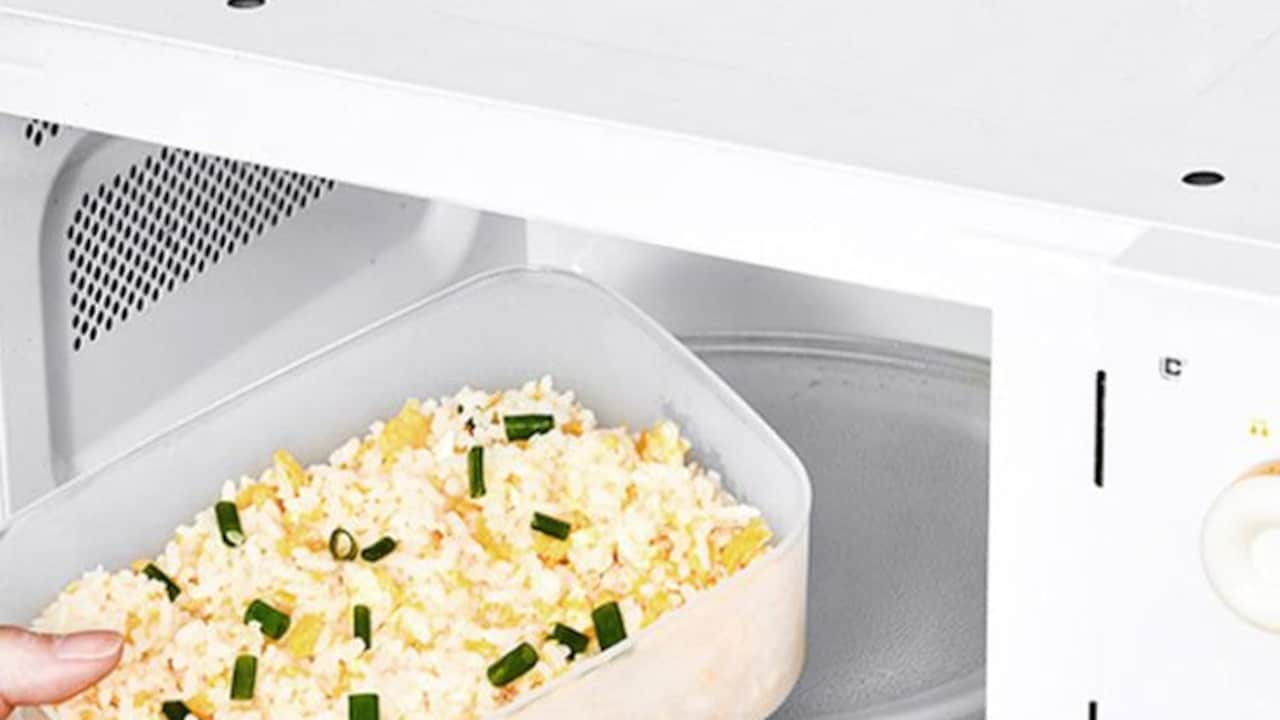10 Tips To Pick Microwave-Safe Container Sets That Do Not Absorb Food Smell
Here are 10 are practical yet smart tips to pick microwave-safe containers that won't let yesterday's dinner haunt today's meal.

Tired of Smelly Lunchboxes? 10 Easy Ways to Pick Microwave-Safe Containers That Stay Fresh.
Ever pulled out a lunchbox that smells like yesterday's rajma-chawal, even after a thorough wash? That's the silent frustration many face daily. Containers that trap odours not only spoil the mood but can affect the taste of food too. With modern lifestyles demanding quick reheating and storage solutions, microwave-safe containers have become a kitchen essential. But not all are created equal.
From materials that resist smells to designs that make reheating a breeze, choosing the right container can transform the way food is stored, served, and savoured. Whether packing office lunches, storing leftovers, or meal prepping for the week, the right choice can make life easier and cleaner. So, let's uncover 10 tips to pick microwave-safe container sets that do not absorb food smell.

Tips To Pick Microwave-Safe Container Sets That Do Not Absorb Food Smell; Photo Credit: Pexels
10 Practical Ways to Pick Containers That Keep Food Fresh and Smell-Free
1. Go for Materials That Don't Retain Odours
The battle against food smells begins with the material itself. Glass, borosilicate, and certain high-quality plastics are your best bets. Glass containers, though a tad heavier, are the champions of neutrality; they don't absorb food aromas or stains, no matter how spicy the dish. Borosilicate glass, in particular, can handle high temperatures without cracking, making it perfect for regular microwave use.
Avoid thin, low-grade plastic containers; they may melt, warp, or trap the scent of masala over time. Look for containers marked as BPA-free and microwave-safe. These are designed to resist heat and odour absorption. Some premium options even come with odour-resistant coatings.
A good rule of thumb, if your container smells even after a proper wash, it's time to switch. Think of containers as kitchen partners; the right material keeps your food fresh, your microwave safe, and your meals odour-free.
2. Choose Containers with Airtight Lids
Airtight lids are like a protective shield for your food. They lock in freshness while preventing odours from escaping and mingling with other dishes in the fridge. More importantly, they stop external smells from seeping into your food.
Silicone-sealed lids work wonders. They create a tight vacuum that keeps your dal from turning into a sniff test of every dish stored nearby. Snap-lock lids are also a reliable choice, easy to use, leakproof, and sturdy enough to withstand daily use.
When microwaving, always check if the lid has a vent or can be slightly loosened to release steam. This prevents the lid from warping or cracking under heat. Airtight containers aren't just about preserving food; they save you from opening a box and being hit by a wave of yesterday's curry aroma.
Also Read: Microwave Oven Buying Guide 2025: 10 Features You Must Check Before Buying
3. Pick the Right Shape and Size
Shape matters more than most realise. Square or rectangular containers make the best use of space in both microwaves and refrigerators. Round containers, on the other hand, are great for soups and gravies since they heat evenly.
A mix of different sizes helps manage portions smartly. Small ones for chutneys or sauces, medium for sabzis, and large ones for full meals. It's also practical when meal prepping, everything fits neatly without a jigsaw puzzle moment in the fridge.
Avoid oversized containers for small portions; too much air inside can dry out the food and cause odours to linger. Compact, well-fitted containers ensure food stays fresh and flavourful. And let's be honest, a neatly stacked fridge with the right shapes feels oddly satisfying!
4. Check for BPA-Free and Food-Grade Labels
When it comes to microwaving, not all plastics are created equal. Some release harmful chemicals when heated, which can affect your food and health. Always look for the “BPA-free” and “food-grade” marks on packaging. These guarantee that the material can handle heat safely without leaching toxins or odours.
BPA (Bisphenol A) is known to alter the smell and taste of food. Containers without it are safer and more durable. High-quality brands often include an official microwave-safe label, don't skip checking it.
Investing in certified food-grade containers may cost a little more initially (say ₹600–₹1,000 for a good set), but the peace of mind they offer is priceless. After all, good food deserves safe, odour-free storage.

Tips To Pick Microwave-Safe Container Sets That Do Not Absorb Food Smell; Photo Credit: Pexels
5. Prioritise Ease of Cleaning
If a container makes you dread washing dishes, it's not the one. Easy-to-clean containers prevent smells from settling into corners and crevices. Smooth, non-porous surfaces are best; they don't allow oils or spices to cling.
Glass containers and high-grade plastics usually clean up easily with regular dishwashing liquid. Avoid textured or matte finishes, as they tend to trap residues. Dishwasher-safe options can save precious time, too.
A handy trick: soak containers in warm water with a bit of baking soda and lemon before washing. It naturally neutralises odours without harsh chemicals. Because let's face it, no one wants to spend extra time scrubbing last night's paneer tikka smell out of a lunchbox.
6. Look For Stackable, Space-Saving Designs
Kitchen storage is a daily puzzle, especially when the shelves are full of mismatched containers. Stackable designs make organisation effortless and keep your space clutter-free.
Containers that nest within one another or come in modular sets are a blessing. They make it easy to store, carry, and retrieve food without hunting for matching lids. Transparent bodies also help identify what's inside, no more playing “guess the curry” every morning.
Stackable designs aren't just space-efficient; they also allow air circulation when drying after a wash, reducing musty smells. A tidy, well-arranged kitchen always feels more inviting, and that's half the joy of cooking.
7. Opt for Leakproof Containers
Nothing ruins a workday faster than finding dal or rasam spilt inside a lunch bag. Leakproof containers save you from messy surprises and lingering smells. The key lies in the seal, silicone rings and locking clips are your best friends here.
When testing, fill a container with water, close the lid, and give it a gentle shake. No leaks? That's a keeper. Leakproof containers also prevent moisture from entering, which helps control bacterial growth that often causes foul odours.
While glass containers tend to be naturally leakproof, many new-generation plastic ones are equally reliable. They're perfect for carrying everything from gravies to curd rice without fear of spills or smells mixing.

Tips To Pick Microwave-Safe Container Sets That Do Not Absorb Food Smell; Photo Credit: Pexels
8. Prefer Transparent Containers for Easy Identification
Transparent containers are underrated heroes in every kitchen. Being able to see what's inside means you don't have to open and sniff every box, saving both time and sanity. It also helps you use food before it spoils, reducing waste.
Clarity isn't just convenience; it's hygiene. Frequent opening introduces air and moisture, which can lead to odours. Clear containers prevent that by allowing quick visual checks.
Glass containers offer perfect transparency, while certain BPA-free plastics provide a lightweight, equally clear alternative. When your fridge looks like a neatly arranged display of meals instead of a mystery zone, you'll thank yourself for choosing see-through containers.
9. Mind the Heat Resistance
Microwave-safe doesn't always mean heat-resistant. Some containers can warp, discolour, or even absorb odours after repeated heating. Borosilicate glass and high-temperature polypropylene plastics are designed to withstand heat better than regular ones.
Always check the manufacturer's temperature range; it's usually printed on the bottom. Good-quality containers can typically handle up to 110°C or more without deforming.
Avoid sudden temperature shifts, like placing a hot container straight into the fridge. It not only shortens its lifespan but can also cause cracks or smells to settle. Gentle care ensures your containers last longer and remain odour-free meal after meal.
10. Invest in Reputed Brands and Durable Sets
Sometimes, a trusted name makes all the difference. Reputed brands maintain strict quality standards for heat safety, durability, and odour resistance. While cheaper, no-name options might seem tempting, they often degrade quickly, trapping smells and warping under heat.
Brands like Milton, Borosil, Cello, and Treo have built a reputation for offering reliable microwave-safe containers that combine practicality with style. Many even come with warranties, so you're assured of longevity.
Think of it as a long-term investment. A premium set may cost a bit more upfront (around ₹1,200–₹2,000 for a good range), but it saves countless replacements and a lot of nose-pinching in the long run. Quality, in this case, truly pays off.
Products Related To This Article
1. Allo Foodsafe Glass Containers With Lids With Break Free Lock
2. Lock & Lock Airtight Round Nestable Food Container Set of 2
3. Airtight Food Storage Containers Set
4. TEX-RO Air Tight Container For Fridge Organizer Plastic Container Storage Set Fridge Storage Boxes
5. URBAN CHEF Mixing Bowl Set of 3 Stainless Steel
6. AGARO Borosilicate Glass Containers with Lids
7. Nestasia Food Safe Glass Containers with Lid Set of 4
Smell-free, microwave-safe containers aren't just a luxury; they're a necessity for anyone who loves good food and hates unnecessary hassle. From material choice to lid design, every small detail plays a role in keeping your meals fresh and fragrance-free.
The next time you shop, remember these ten tips; they're your recipe for convenience, hygiene, and peace of mind. After all, food should remind you of home-cooked warmth, not last week's leftovers. So go ahead, make the smart choice, and let your containers hold on to memories, not smells.
Disclaimer: The images used in this article are for illustration purposes only. They may not be an exact representation of the products, categories, and brands listed in this article.
























